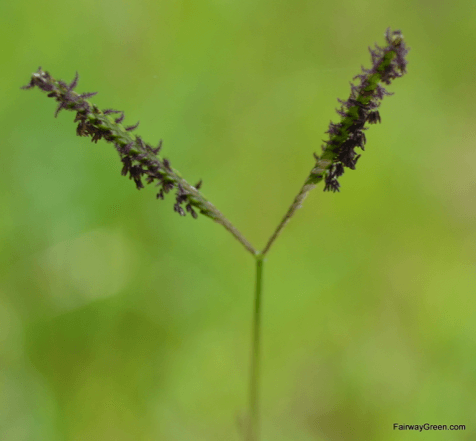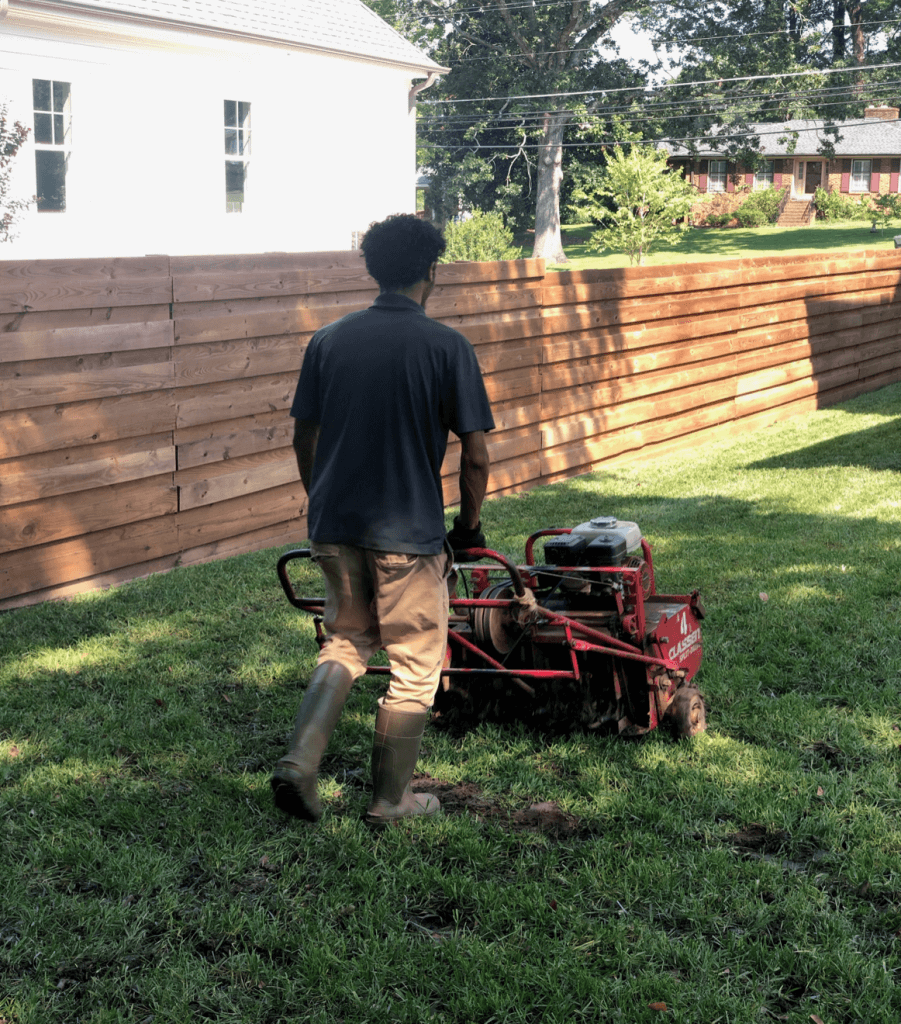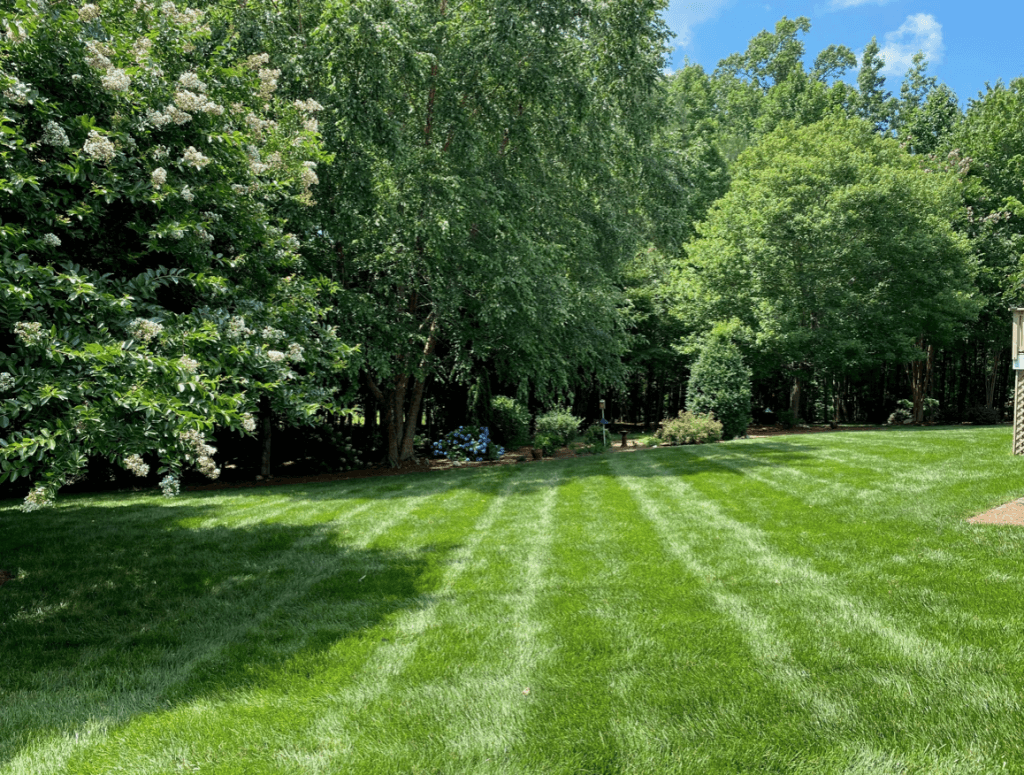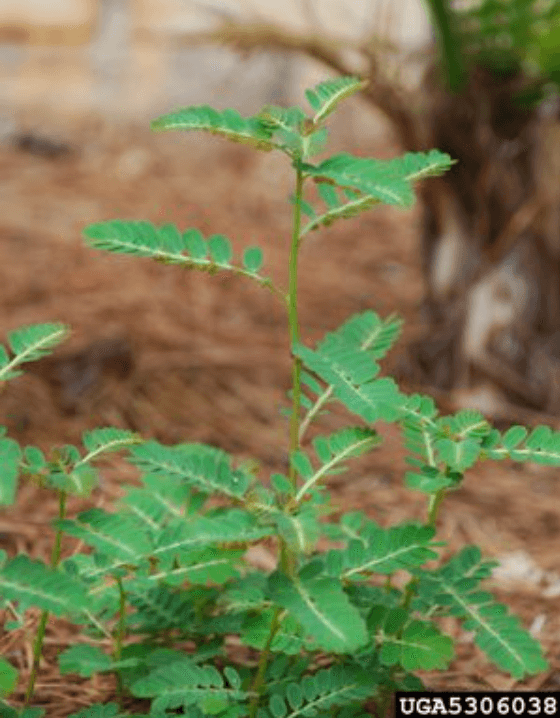Summer Lawn Update August is one of the more difficult times of the year for lawn care in this part of the country. This is when many homeowners have concerns about the amount of weeds in the lawn and declining turf (this is especially the case for Fescue turf). There are a couple uncontrollable reasons… Read more »
August is one of the more difficult times of the year for lawn care in this part of the country. This is when many homeowners have concerns about the amount of weeds in the lawn and declining turf (this is especially the case for Fescue turf). There are a couple uncontrollable reasons for this situation.
Pre-emergent applied in late winter/spring have broken down by now allowing crabgrass and other weeds to germinate and develop. Pre-emergent has the ability to control crabgrass and other weeds germinating from seed to establish in the lawn until it breaks down. Pre-emergent is designed to break down in late July to early August so we can start seeding Fescue at the end of August to the middle of October. If pre-emergent did not break down, you would not have Fescue seed germination and development. Since most, if not all, Fescue lawns in the Transitional Zone require seeding in the fall, this break down is instrumental to fescue seed germination.
Fescue declines in the summer due to high ground temperatures, disease pressure and dry weather. Cool season turf (like Fescue) will lose root mass once ground temperatures reach 80 degrees. Plant loss also occurs when dry air temperatures reach 80 degrees. Cool season grasses use more energy than they can store in summer causing plant decline. Irrigation can help but only so much.
Another reason for Fescue decline is disease. All managed Fescue lawns in the Transitional Zone will have some level of Brown Patch Fungus. However, Brown Patch fungus is just one of many diseases that negatively impact cool season grasses.

August is a good time to start lawn renovation if you have a fescue lawn with perennial grassy weeds. Most grassy weeds will require a non-selective weed control like RoundUp® to control grassy weeds like Dallisgrass, Orchardgrass, Bermuda or Bahia. Bahiagrass is the one that produces a tall seed head shortly after mowing. The seed head is split; similar to when you make the peace sign with your fingers. Bermuda and Bahia will require up to three applications; two and a half weeks apart to provide the best long term control in the lawn. You may want to consider a Bermuda suppression program after removing it from your fescue lawn in the coming years. This will help control most of the Bermuda that will tend to return to the lawn in the future. It is not advisable to apply a non-selective herbicide to control annual broadleaf weeds. In addition to killing the weed, you will also kill your desirable turf.

The proper time to seed tall fescue in the Transitional Zone is at the end of August to mid-October; not the spring. Ground and air temperatures are in the best range for the longest period time for germination and root development. Many fescue lawns will require seeding in fall due to our hot dry periods and disease damage. Fescue lawns that did not receive regular preventative fungicides appear to have the worst damage once again this summer.
Core aeration seeding is a common practice to seed Fescue in the fall. Core aeration helps reduce upper soil compaction and prepares a seeding bed at the same time. A seeding bed is needed to have the best seed to soil contact for the best possible germination rate and establishment.
Fairway Green is booking now for core aeration seeding. Book early since we have limited weeks to complete this service.

Fairway Green uses and offers to customers and non-customers its very own hand selected turf type tall fescue mixture; Southern Perfection. Fairway Green’s Southern Perfection contains a mixture of 60% Falcon IV, 19% Tribute II, 19% Renegade DT and 2% Rockstar Kentucky Bluegrass. Turfgrass for the next century…winning the fight against surface-feeding insects, grows low but grows strong…your lawn will never be greener; naturally cut down on clippings and mowing. Falcon IV, Tribute II and Renegade DT are the best tall fescue varieties available in the industry. Tested across multiple states, locations and environments these varieties exhibit improved turf quality, vibrant turf color, excellent disease resistance and improved stress tolerance. Rockstar Kentucky bluegrass is the fastest establishing elite Kentucky bluegrass available in the lawn care industry. Looking for elite turf, fast germination and enhanced knitting of turf for improved sod strength and traffic tolerance? Look no further than Rockstar. In addition to all these great qualities, Southern Perfection contains 0% weed seed and 0% other crop seed.
Southern Perfection is now Water Star® qualified by the Turfgrass Water Conservation Alliance (TWCA). Visit Turfgrass Water Conservation Alliance for additional information about this exciting program.
It is not uncommon to have some crabgrass germinating in the lawn around the end of July through August. The pre-emergent applied earlier in the year will start to degrade and break down. Generally, Crabgrass will germinate in areas with thin turf, along roadways and other hard surfaces, and in high spots of the lawn. Pre-emergent breakdown is especially important in Fescue lawns because seeding needs to take place starting at the end of August to mid-October. Fescue seedlings would not be able to survive with pre-emergent still bonded to the soil particles.
You also may notice an increase in broadleaf weed germination at this time too. Pre-emergent Crabgrass control also helps control broadleaf weed germination.

It is a summer broadleaf weed called Chamberbitter. In fact, one of its nicknames is Little Mimosa weed. It is a broadleaf weed that is thought to have been introduced from Florida from pine straw about 15 years ago. It is a prolific seeder and has done well moving around the Triangle from straw and other means. It typically germinates in mid to late summer and usually appears around pine straw and birdfeeders first. It will grow straight up like a tree until mowed. Chamber Bitter spreads by seed. Seed pods are under and along the leaf branches and contain hundreds of seeds per plant.
It is a difficult broadleaf weed to control with the available broadleaf weed control products. We identify our customers that have this broadleaf weed and try to make multiple weed control applications to gain some control on spreading.
If you live in the Transitional Zone chances are you will have to seed your Fescue lawn every year or at least every other year. Tall Fescue in this zone faces many challenges during the year that can create turf damage or injury. Diseases can be one of the causes for turf damage. Brown Patch Fungus, Dollar Spot and Pythium can be devastating to fescue. Then we experience a couple months of air and ground temperatures that are too high for plant growth and survival. Extended dry periods along with the heat are a damaging combination for all turf types. In fact, when the ground temperatures reach 80 degrees, cool season grasses’ root systems stop developing and actually decline loosing root mass that supports plant survival.
Armyworms lay eggs on structures like homes, trees and shrubs. Eggs hatch as larva, drop to the ground and start feeding heavily on healthy actively growing turf for about two to three weeks. After feeding and damaging the turf, they will bury in the ground and pupate. This life cycle continues till October/November. North Carolina could see two to four generations of Fall Armyworms. It is thought that they do not survive winter months in North Carolina.
It is time to core aerate and seed you fescue (cool season) lawn. Fescue grass does not have the ability to regenerate and must be aerated and reseeded each year to establish new growth. Space fills up quickly for this critical service, so sign up today by contacting us or clicking the “Add Services” link within our customer portal.
Due to factors beyond our control (watering, soil and climatic conditions, adverse weather conditions, etc.) we cannot guarantee a stand of turf after seeding. We guarantee that Fairway Green will do the seeding job properly. Please, you MUST contact us within three business days if you have any concerns about the service performed today. We use the best seed available on the market. After the job is completed, success is totally in your hands! Watering is the key to successful results on your new seeding. If you cannot water be patient. The seed will still germinate but will take much longer.